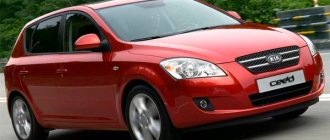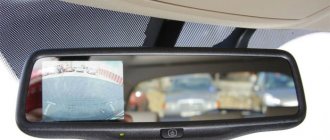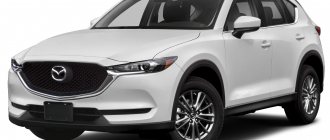The TDI diesel engine (the abbreviation stands for Turbocharged Direct Injection) is the brainchild of engineers from the Volkswagen automobile concern, work on which began in the 70s of the twentieth century. The name TDI itself is a trademark protected by a patent, to which the concern has exclusive rights, which means that the origin of the engine can be unmistakably determined by such an inscription.
Similar power units are installed on the entire subsidiary range of the German automobile giant, be it cars, trucks, jeeps, minibuses. Also, some models have been equipped with TDI engines for some time. Let's take a closer look at what a TDI engine is? What are its advantages and is it reliable and promising?
Fuel injection in TDI engines
In the early stages of the development of diesel internal combustion engines, the pressure in the system, which involves the presence of a fuel injection pump in conjunction with simple mechanical injectors, was only 20-40 bar. A modern diesel engine has a minimum pressure of 1600 Bar and higher. The tendency to increase fuel injection pressure is due to the fact that diesel engines have a very short time allotted for the mixture formation process.
If the crankshaft rotates at 2000 rpm, then only 3-4 milliseconds are allocated to mix a portion of diesel fuel with air. Increasing the crankshaft speed further shortens this time period. Also, the preparation of a homogeneous fuel-air mixture becomes possible only by increasing the injection pressure. In the case of low pressure, the fuel mixture will be of poor quality, and the combustion process will be low efficient. The result is increased toxicity of diesel exhaust and low efficiency.
Previously, the fuel injection pump on diesel engines was responsible for fuel injection, which works in tandem with mechanical injectors; today, common rail systems are installed on diesel engines. Since the combustion process in a diesel engine is an explosion from the contact of a portion of diesel fuel with air heated during the compression stroke, the injection time is very limited.
The fuel injection pump in a modern diesel engine simply creates pressure in the common line, and TDI piezo injectors (piezoelectric injectors) are capable of injecting a clearly defined amount of diesel fuel into the cylinders of a diesel engine in a very short period of time (less than 0.2 milliseconds) at the command of the ECU.
Also in some designs of diesel internal combustion engine power systems you can find so-called pump injectors. This means that each injection nozzle is equipped with its own high pressure pump. It turns out that the development of diesel technology today comes down to increasing injection pressure and maximum efficiency of the turbocharging system. This way it is possible to solve the main problems: increase power and reduce the level of exhaust gas toxicity.
We recommend: Making an AUX output on your car radio yourself
Reliability of diesel TDIs
The installation of turbocharging allowed the diesel engine to develop more power, and the diesel efficiency also increased. As for TDI engines, these engines are quite reliable if used correctly. The health of these internal combustion engines is most strongly influenced by the quality of the fuel and timely maintenance. With proper care, the engine itself can even turn out to be a “millionaire”.
The weak point of TDI is the injectors and turbocharger. The service life of the injectors directly depends on the quality of the diesel fuel and the general condition of the TDI diesel power system. The service life of the turbine can vary, the average resource is 120-160 thousand km.
Overall assessment of the benefits of TDI
Among the identified advantages of the Turbocharged Direct Injection power plant, one cannot help but pay attention to the following:
- power;
- efficiency;
- compactness;
- environmental friendliness.
This set was not determined immediately and not even after the appearance on the market in 1980 of the Audi 80 with a TDI under the hood, but only after numerous modifications and improvements, which led to the launch in 1989 of a new powerful turbodiesel, which in many ways is not inferior to gasoline units.
Experts recognize that TDI is one of the best modern diesel engines, the efficiency of which is determined based on the ratio of initial power and torque per unit of cylinder volume and fuel consumed.
Peculiarities
The main feature is the turbine that is equipped with the TDI engine. a mechanism that provides forced air supply, thereby increasing torque and power of the motor. But unlike other engines, the 2.0 TDI has a special turbine design - with variable geometry. How is it different from conventional compressors? This design allows you to regulate the magnitude and direction of the exhaust gas flow. This gives a significant increase in power and high fuel efficiency. So, from two liters of volume you can get up to 170 horsepower. And thanks to the direct injection system, fuel consumption is about 5.5 liters in the combined cycle.
Some TDI engines in Volkswagen are equipped with a VNT turbine.
This abbreviation means that it is a compressor with a variable nozzle. The supplier of such turbines for Volkswagen is Garrett. The design of this unit assumes the presence of:
- Vacuum drive.
- Control mechanism.
- Guide vanes.
The latter are designed to change the speed of exhaust gas flow. This occurs by adjusting the cross-sectional area of the channel. Thus, the blades can rotate around their axis at a certain angle. This action is performed using a control mechanism. It consists of a lever and a ring. The mechanism is activated by a vacuum drive. It is he who acts on the lever through a special rod. The vacuum drive is equipped with a boost pressure limiting valve. It is connected to the electronic engine management system. The mechanism is activated by the boost pressure and intake air temperature.
TDI turbocharging: variable geometry turbine
Not only dynamics, but also efficiency and environmental friendliness largely depend on the efficiency of the TDI turbocharger. Correct air pressure must be realized over as wide a range as possible. For this reason, TDI engines are equipped with a turbocharger with variable turbine geometry.
The leading turbine manufacturers in the world use the following names:
- VGT turbine (from the English Variable Geometry Turbocharger, which means turbocharger with variable geometry). Produced by BorgWarner.
- Turbocharger for diesel VNT (from the English Variable Nozzle Turbine, which means a turbine with a variable nozzle). This name is used by Garrett.
A variable geometry turbocharger differs from a conventional turbine in that it has the ability to adjust both the direction and magnitude of the exhaust gas flow. This feature allows you to achieve the most suitable turbine speed in relation to a specific operating mode of the internal combustion engine. In this case, the compressor performance increases greatly.
For example, the VNT turbine is based on special guide vanes. Additionally, there is a control mechanism, and the presence of a vacuum drive is also noted. These turbine blades rotate at the required angle around their axis, thereby being able to change the speed and direction of the exhaust flow. This occurs due to a change in the cross-sectional area of the channel.
The control mechanism is responsible for rotating the blades. Structurally, the mechanism has a ring and a lever. The lever is influenced by a vacuum drive, which controls the operation of the mechanism through a special rod. The vacuum drive is controlled by a separate valve that limits the boost pressure. The valve is an integral element of the electronic engine control system and is activated depending on the boost pressure. This value is measured by separate sensors:
- a temperature sensor that measures the intake air temperature;
- boost pressure sensor;
In other words, the turbocharging on the TDI works so that the charge air pressure is always optimal at different engine speeds. In fact, the turbine doses the energy of the exhaust gas flow.
- As is known, at low engine speeds the exhaust flow rate (energy) is quite low. In this mode, the guide vanes are usually closed, thereby achieving a minimum cross-section in the channel. As a result of passing through such a channel, even a small amount of gases spins the turbine more efficiently, causing the compressor wheel to rotate noticeably faster. It turns out that the turbocharger provides greater performance at low speeds.
- If the driver sharply presses the gas, then the effect of the so-called “turbo lag” occurs in a conventional turbine. Turbo lag should be understood as a delayed response to pressing the gas pedal, that is, not an immediate increase in power, but a pick-up after a short pause. This feature is due to the inertia of the turbocharging system, as a result of which the gas flow is insufficient at the moment of a sharp increase in crankshaft speed. In turbines with variable geometry, the guide vanes rotate with a certain delay, which allows you to maintain the required boost pressure and practically get rid of turbo lag.
- When driving at high and close to maximum engine speeds, the exhaust gases have maximum energy. To prevent the creation of excess boost pressure, the blades in variable geometry turbines are rotated so that a powerful flow of gases moves through a wide channel with the largest cross section.
We also recommend reading the article about the service life of diesel turbines. From this article you will learn about the service life of this unit in comparison with gasoline analogues, and will also get the opportunity to familiarize yourself with the basic tips and recommendations for increasing the service life of a diesel engine turbine.
The relatively short service life of the turbocharger is due to the fact that only variable geometry turbines are installed on the TDI. During engine operation, the turbocharger spins up to 200 thousand rpm and constantly interacts with the flow of exhaust gases heated to 1000 degrees Celsius. Such thermal and mechanical loads, as well as the individual design features of these turbines, relatively quickly lead to the need to repair or replace the turbocharger.
Classifications
By energy source
Engines can use the following types of energy sources:
- electrical; DC (DC motor);
- AC (synchronous and asynchronous);
By type of movement
The engines can convert the resulting energy to the following types of movement:
- rotational motion of solid bodies;
- translational motion of solid bodies;
- reciprocating motion of solid bodies;
- jet movement;
- other types of movement.
Electric motors that provide translational and/or reciprocating motion of a solid body;
- linear;
- induction;
- piezoelectric.
Some types of electric rocket engines:
- ion engines;
- stationary plasma engines;
- motors with anode layer;
- radioionization engines;
- colloid engines;
- electromagnetic motors, etc.
By device
External combustion engines are a class of engines where the heat source or fuel combustion process is separated from the working fluid:
- piston steam engines;
- steam turbines;
- Stirling engines;
- steam engine.
Internal combustion engines are a class of engines in which the formation of a working fluid and the supply of heat to it are combined in one process and occur in one technological volume:
- engines with hermetically sealed working chambers (piston and rotary internal combustion engines);
- engines with chambers from which the working fluid has free access to the atmosphere (gas turbines).
According to the type of movement of the main working body, internal combustion engines with lockable working chambers are divided into internal combustion engines with reciprocating motion (piston) (divided into trunk and crosshead) and internal combustion engines with rotational motion (rotary), which, according to the types of rotational motion, are divided into 7 different types of structures. Based on the type of ignition of the working mixture, internal combustion engines with hermetically sealed chambers are divided into engines with forced electric ignition (glow or spark) and engines with compression ignition of the working mixture (diesel).
According to the type of mixture formation, internal combustion engines are divided into: with external mixture formation (carburetor) and with direct fuel injection into the cylinders or intake manifold (injection). Based on the type of fuel used, internal combustion engines are divided into those running on gasoline, liquefied or compressed natural gas, alcohol (methanol), etc.
Jet engines
Air-jet engines:
- ramjet engines (ramjet engines);
- pulsed jet engines (PuVRD);
- gas turbine engines: turbojet engines (TRD);
- dual-circuit turbofan engines;
- turboprop (TVD);
- turbofan high-pressure engines;
Rocket engines
- liquid rocket engines;
- solid propellant rocket engines;
- nuclear rocket engines;
- some types of electric rocket engines.
By application
Due to fundamentally different requirements for an engine depending on its purpose, engines identical in operating principle can be called “ship”, “aviation”, “automobile” and the like.
The category “Engines” in patent science is one of the most actively replenished. Between 20 and 50 applications in this class are submitted per year worldwide. Some of them are distinguished by their fundamental novelty, some by a new ratio of known elements. Engines that are new in design appear very rarely.








